Lecture 30 - Gymnosperms
1/42
Name | Mastery | Learn | Test | Matching | Spaced |
|---|
No study sessions yet.
43 Terms
Major groups of living gymnosperms?
Cycads, Ginkgos, Gnetophytes, Conifers
Ginkgo biloba.
Characteristics?
Fan-shaped leaf. Deciduous. Slow growing. Can reach 30m or more in height. Dioecious. Butyric acids (seeds). Resistant to disease and air pollution.
Ginkgo biloba
Phylum?
Ginkgophyta
Ginkgo biloba
Age?
65 million year old fossil.
Ginkgo biloba
Common name?
Maidenhair
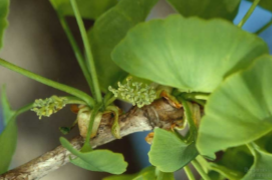
What is this?
Pollen-bearing cone
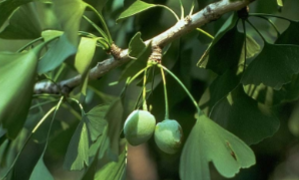
What is this?
Fleshy-coated seed
Phylum Cycadophyta
Common Name?
Sago Palm
Phylum Cycadophyta
How many species?
100 Species
Phylum Cycadophyta
Characteristics?
Palm-like leaves. Dioecious. Highly toxic; contain neurotoxins
and carcinogenic compounds
Phylum Cycadophyta
Environment?
Tropics
Phylum Gnetophyta
Most closely related too?
Flowering plants
Phylum Gnetophyta
How many species?
70 (One in California, Ephedra)
Phylum Gnetophyta
Environment?
Hot; deserts of Africa
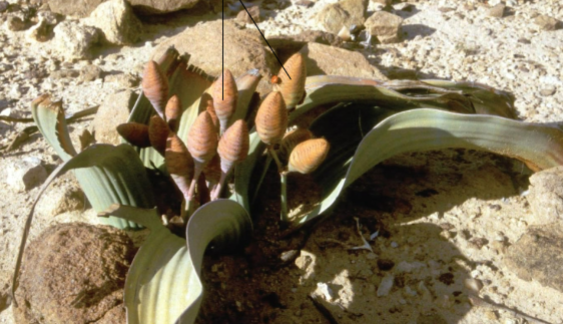
What are these?
Ovulate cones
Phylum Coniferophyta
Appeared how long ago?
About 350 million years ago
Phylum Coniferophyta
How many living species?
550
Phylum Coniferophyta
Characteristics?
Vascular plant with seeds (mostly in cones). Woody trees and shrubs. Mostly evergreen; a few are deciduous. Usually have needle-like or scale-like leaves. Elaborate root system. Monoecious or dioecious. Tallests get to over 100 meters (Costal Redwoods)
Gymnosperms dominated
terrestrial ecosystems…
…during the Mesozoic era,
252 to 66 million years
ago
Phylum Coniferophyta
Evolutionary challenges?
Maintaining upright posture. Providing water to top of tree. Availability of adequate light.
Phylum Coniferophyta
Evolutionary adaptations?
Efficient photosynthesis. Weight is centered. Fewer branches than in other conifers. Shallow roots (3-5 feet deep) can
cover up to one acre. Rich in acidic tannin; unappealing to certain pests.
Phylum Coniferophyta
Most common causes of death?
Fire damage, insect infections, fungal infections.
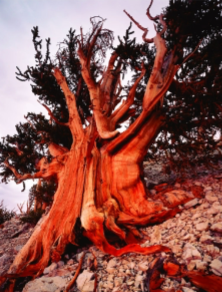
What is this?
Pinus longaeva, Bristlecone pine, ound in the White Mountains of California, includes some of the oldest living organisms, reaching ages of more than 4,600 years.
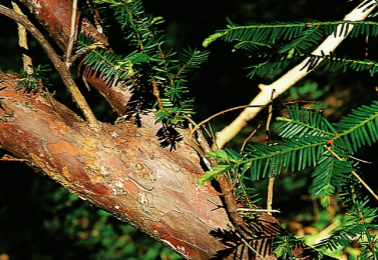
What is this?
Taxa brevifolia. Pacific yew, is a source of taxol, a compound used to treat women with ovarian cancer. Pharmaceutical companies are now refining techniques for synthesizing drugs with taxol-like properties.
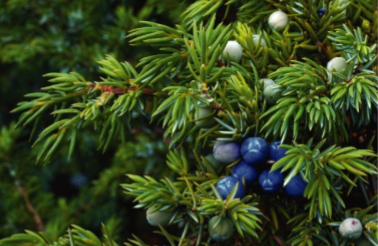
What this??
Juniperus communis. Common juniper, the “berries” are actually ovule-producing cones consisting of fleshy sporophylls.
Oldest conifers?
The Bristlecone
Pines (4,725 years)
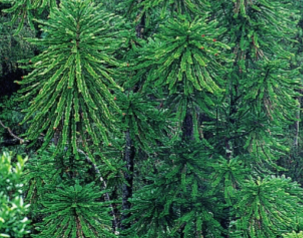
What be this?
Wollemia nobilis. Wollemia pine. Survivors of a confer group once known only from fossils were discovered in m1994 in a national park only 150 kilometers from Sydney, Australia. The species consists of just 40 known individuals two small groves.
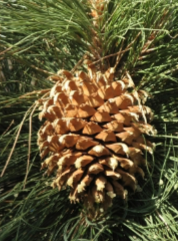
???
Pinus coulteri, the Coulter pine or big-cone pine.
Pinus coulteri
Common name?
The Coulter pine or big-cone pine.
Pinus coulteri
Native too?
The coastal mountains of SouthernThe
California and northern Baja California.
Heaviest cone of any pine tree?
Pinus coulteri
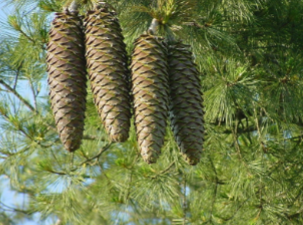
???
Pinus lambertiana, sugar pine
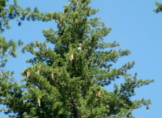
???
Pinus lambertiana
Pinus lambertiana
Native too?
The mountains of the Pacific coast of North America, from Oregon Sthrough California
to Baja California.
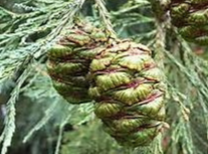
Belongs too???
Giant sequoia
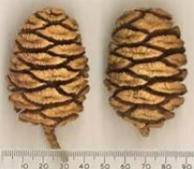
Belongs too???
Giant sequoia
Pollen produces…
…sperm
Conifers use what to spread pollen?
Wind.
Key features of the Gymnosperm
Domininace of the sporophyte generation. Development of seeds from fertilized ovule. The transfer of sperm to ovules by pollen.
What produces pollen?
Microsporangia.
What produces the egg?
Megasporangia.
Is pollen haploid or diploid?
Haploid.
Is the seed haploid or diploid?
Diploid.